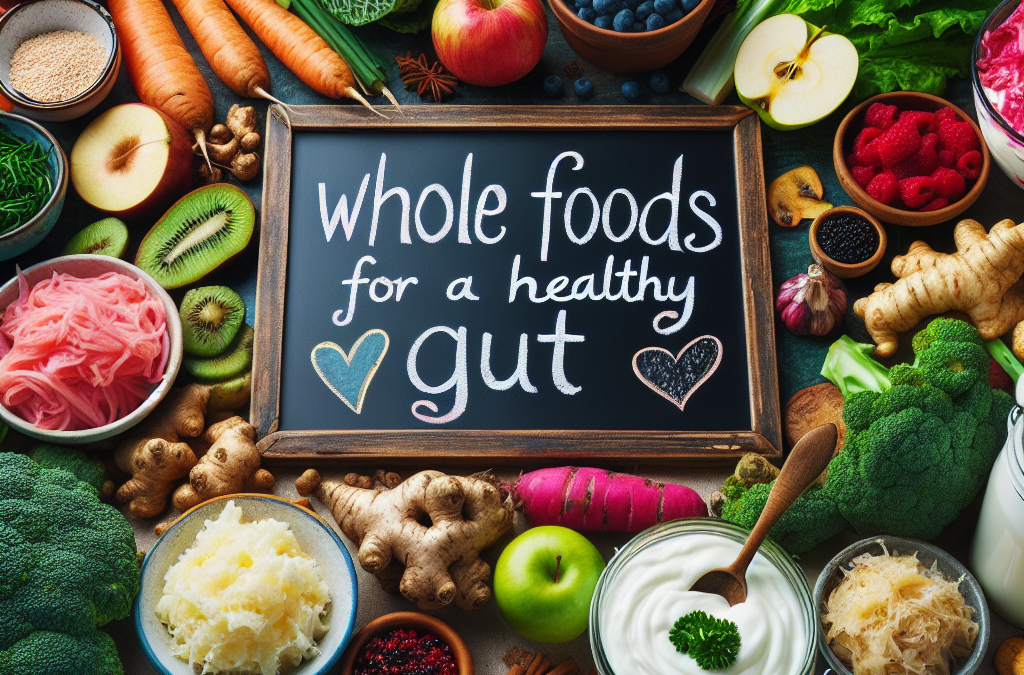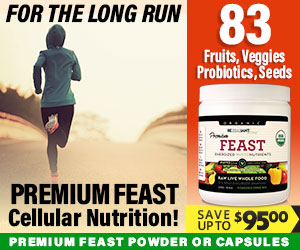1. Fermented Foods
What Are Fermented Foods?
Fermented foods are like the cool kids of the nutrition world—they’re packed with beneficial probiotics, which can enhance gut health. This process not only preserves food but also transforms it, allowing the growth of good bacteria. Foods like yogurt, sauerkraut, and kimchi are some of the most popular fermented choices. I’ve become a huge fan of adding these to my meals for a boost of flavor and health.
Not only are they tasty, but they also aid in digestion. I remember when I added kimchi to my sandwiches—it added a spicy kick while helping my stomach feel at ease. Plus, they’re super easy to incorporate into a variety of dishes, which is great if you’re not into complicated recipes.
It’s like a party for your gut! Consuming these foods regularly can contribute positively to your overall health and well-being. If you haven’t tried them yet, I highly recommend popping into your local grocery store and picking some up!
The Benefits of Probiotics
Probiotics are the live bacteria found in fermented foods, and they offer a plethora of benefits. They help balance your gut flora, making sure the bad bacteria don’t take over. Honestly, it’s fascinating how these tiny organisms play such a large role in our health.
I’ve noticed that on days when I’m consistent with my probiotic intake, my digestive complaints really drop. It’s reassuring to know that something as simple as yogurt can help me feel better! It’s incredible how something as small as a spoonful can make such a difference.
Furthermore, studies suggest that probiotics can even enhance your immune system. Regularly consuming fermented foods can lead to fewer bouts of colds and other minor ailments. It’s like giving your gut the armor it needs to fight back!
How to Incorporate Fermented Foods
Integrating fermented foods into your diet isn’t as hard as it seems. I usually start my day with a cup of yogurt topped with some fresh fruit and a sprinkle of granola; it’s a delightful way to get those probiotics flowing! You can also add sauerkraut to tacos or kimchi to stir-fries for that extra zing.
If you’re feeling adventurous, you might even want to experiment with homemade versions. There are tons of tutorials online for brewing your own kombucha or starting a jar of fermented vegetables. It’s a fun project that can give you a sense of accomplishment too!
So get creative! The goal is to find a way to enjoy these foods that works for you. The more you play with flavors and textures, the more you’ll discover what suits your palate while doing wonders for your gut.
2. Fruits and Vegetables
Why They Matter
Fruits and vegetables are nature’s gift to our health. They’re high in fiber, vitamins, and antioxidants, making them essential for a healthy gut. The fiber helps keep things moving smoothly through our digestive system, and I can’t stress enough how important that is.
When I started incorporating more colorful fruits and veggies into my meals, I noticed how much better I felt overall. Not only did it affect my digestion, but I also felt more energetic and vibrant. It’s like fueling your body with the best ingredients possible!
Plus, the variety is endless! From leafy greens to vibrant berries, there’s something for everyone. It’s like a rainbow on your plate, and we all know how appealing that looks. Eating the colors of the rainbow is a fun way to ensure you’re getting a wide range of nutrients.
Fiber: The Gut Hero
Fiber is the unsung hero of gut health. It feeds the good bacteria in our intestines, helping to maintain a balanced microbiome. Trust me when I say that incorporating enough fiber into my diet has made a world of difference.
When I look back at my former diet (oh boy), I realize I wasn’t prioritizing fiber like I should’ve been. Since bringing more whole grains like quinoa and a variety of beans into my meals, I’ve felt significantly less bloated. It’s like a refreshing change, and feeling lighter really boosts my mood.
And if you’re looking for an easy way to add fiber, consider snacking on fruits like apples or nuts through the day. They keep you full while nourishing your body. A win-win situation in my book!
Creative Ways to Enjoy Them
Think outside the box—fruits and vegetables can be so much more than just sides on your plate! I love tossing spinach into my breakfast smoothies for that healthy green boost. You can barely taste it, and it’s an effortless way to amp up your intake.
Roasting veggies is another game changer; it transforms them into these sweet, caramelized bites that are hard to resist. Just drizzle some olive oil, season them, and pop them in the oven—it’s that simple!
Fruit salads, veggie dips, or even incorporating them into desserts—there are loads of ways to get more fruits and veggies into your daily routine while keeping things delightfully interesting!
3. Whole Grains
The Power of Whole Grains
Whole grains are fantastic for your gut, packed with nutrients and fiber. Unlike refined grains, they retain the bran and germ, which means they’re bursting with goodness! Switching to whole grains was one of the best health decisions I made.
They not only provide sustained energy but also help feed the healthy bacteria in your gut. I’ve made it a habit to choose whole grain pasta, bread, and rice. The interesting textures and flavors really bring life to my dishes.
And let’s not forget—they keep you feeling fuller for longer! That means fewer cravings and a more balanced diet overall. It’s like having a secret weapon in your pantry.
How to Include Whole Grains in Your Diet
Incorporating whole grains might be easier than you think. Start your day with a warm bowl of oatmeal, and you’re already on your way! You can dress it up with nuts, seeds, and fruits—every day can be a new flavor adventure!
Switching out your white bread for whole grain options can be a simple change with big benefits. I promise, your sandwiches will be just as delicious, if not more! You can even make that transition with snacks by choosing popcorn over chips for a healthier crunch.
Experimenting with different whole grains like barley or farro can be fun too. Toss them into salads or as sides—they add a delightful chewiness that makes meals more satisfying.
Recipes to Try
If you’re looking for inspiration, try making a quinoa salad with fresh veggies and a zesty dressing. Not only is it refreshing, but it’s also super satisfying! Another good one is a veggie-packed stir-fry over brown rice, it’s a delicious way to maximize both fiber and flavor.
Get an Amazing Discount on the Best Certified Organic Whole Food Supplement!
Baking? Whole grain flour can easily replace all-purpose flour in most recipes. Experimenting with it in muffins or pancakes can yield fantastic results that are both tasty and healthy.
Don’t be shy to explore! The variety in whole grains means every meal can be a new experience. Your gut will thank you for it!
4. Legumes
The Magic of Legumes
Legumes like lentils, beans, and chickpeas are nutritional powerhouses. They’re rich in protein, fiber, and various vitamins. I can’t stress enough how versatile they are; they could be the hero of countless meals!
For me, they’re a lifesaver on weeknights when I need something quick but healthy. A can of chickpeas can be tossed into salad, made into hummus, or even roasted as a snack. It’s convenience meets nutrition!
They’re also great at helping with digestion! The fiber in legumes not only supports gut health but creates a feeling of fullness, which helps with maintaining weight. A double win if you ask me.
How to Cook with Legumes
Cooking with legumes isn’t as daunting as it may seem. Canned varieties are perfect for quick meals, and you can simply rinse them and add them to your dishes. I often throw black beans into my tacos for an added protein punch.
If you have a bit more time, soaking and cooking dried beans can be rewarding. It’s a fun cooking project that can lead to some delicious meals. Just be sure to plan ahead—those little guys take some time to soften up!
From soups to stews, the options are endless. I love lentil soup when the weather gets chilly; it fills me up with warmth and comfort. Plus, it’s super easy to make a big batch and freeze for later!
Delicious Meal Ideas
If you’re looking for ideas, how about trying a vegetarian chili loaded with beans and spices? It’ll warm you up from the inside out! Or a simple chickpea salad with fresh herbs, lemon, and olive oil—it’s refreshing and satisfying.
Don’t forget about curries as well! A lentil curry served over brown rice feels like a hug in a bowl. With so many flavors to work with, legumes can easily be transformed into mouth-watering meals.
Enjoy the experimental phase; legumes are forgiving, and you can pretty much throw them in whatever you feel like cooking. Your taste buds—and gut—will be grateful!
5. Nuts and Seeds
Nutritional Benefits of Nuts and Seeds
Nuts and seeds can be little health bombs! They’re packed with healthy fats, fiber, and essential nutrients. I find having a handful of nuts as a snack to be both filling and indulgent at the same time!
These crunchy bites are also known for their anti-inflammatory properties. They help reduce inflammation in the body, which contributes significantly to overall gut health. I’ve noticed a big difference in how my stomach feels when I incorporate them into my diet.
Plus, they’re versatile! Whether you toss them into smoothies, salads, or just munch on them straight, there’s always room for them in your diet.
Creative Ways to Use Nuts and Seeds
Don’t just think about eating them straight from the bag; there are other ways to enjoy these nutritional wonders! Nut butter is a great alternative to spreads like butter or mayonnaise. I often spread almond butter on whole grain toast for breakfast; it’s quick, easy, and blissfully tasty!
You can also sprinkle chia or flax seeds onto your smoothie bowls or salads. It gives them a delightful crunch while adding way more nutrients without much effort.
Baking with nuts can also elevate your goods. Adding walnuts to banana bread or topping muffins with seeds creates an exciting texture that you can’t help but love.
Storing Nuts and Seeds for Freshness
To keep them fresh and flavorful, store nuts and seeds in airtight containers in a cool, dark place. They can lose their quality if exposed to heat or light, so it’s worth taking that extra step to care for them.
Always check for rancidity, which can happen with age. If they smell off, it’s best not to risk it! Fresh nuts and seeds can really pack a punch in flavor and nutrition, and you don’t want to miss out on that.
Incorporating nuts and seeds into your diet can be a fun journey! Get creative and see what combinations work for you—you might discover your new favorite snack along the way!
FAQ
1. What are fermented foods and how do they benefit gut health?
Fermented foods are foods that have undergone a process of fermentation, where bacteria break down sugars and create probiotics. They benefit gut health by enhancing digestion and promoting a healthy balance of gut bacteria.
2. How can I easily incorporate fruits and vegetables into my diet?
You can incorporate fruits and vegetables by adding them to smoothies, salads, or desserts. Think about roasting or stir-frying them for quick meals, or even just keeping fruit on hand for healthy snacking!
3. Why are whole grains important for a healthy gut?
Whole grains are rich in fiber, which aids digestion and supports gut health. They help maintain regular bowel movements and feed the good bacteria in the gut, making them essential for overall wellness.
4. How much of legumes should I eat for gut health?
Including legumes several times a week in various meals can be beneficial. Try to set a goal of at least a half-cup to a cup per meal to enjoy their health benefits and boost your fiber intake.
5. Are nuts and seeds good for everyone?
Generally, nuts and seeds are great for most people due to their healthy fats and nutrients. However, if you have nut allergies, it’s important to consult a healthcare provider for alternatives that work for you.




